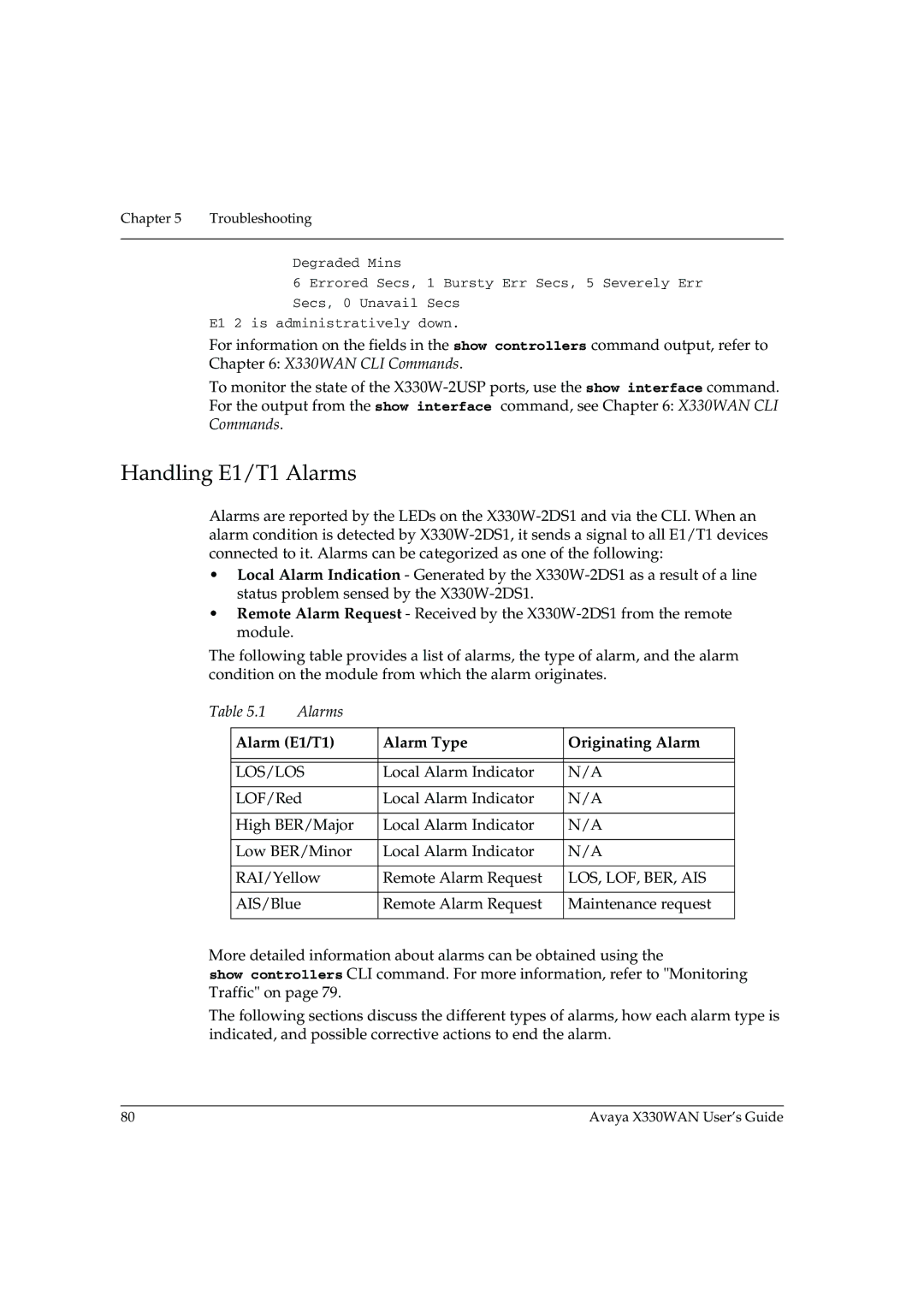
Chapter 5 Troubleshooting
Degraded Mins
6 Errored Secs, 1 Bursty Err Secs, 5 Severely Err
Secs, 0 Unavail Secs
E1 2 is administratively down.
For information on the fields in the show controllers command output, refer to Chapter 6: X330WAN CLI Commands.
To monitor the state of the
Handling E1/T1 Alarms
Alarms are reported by the LEDs on the
•Local Alarm Indication - Generated by the
•Remote Alarm Request - Received by the
The following table provides a list of alarms, the type of alarm, and the alarm condition on the module from which the alarm originates.
Table 5.1 | Alarms |
|
| |
|
|
|
| |
| Alarm (E1/T1) | Alarm Type | Originating Alarm | |
|
|
|
| |
|
|
|
| |
| LOS/LOS | Local Alarm Indicator | N/A | |
|
|
|
| |
| LOF/Red | Local Alarm Indicator | N/A | |
|
|
|
| |
| High BER/Major | Local Alarm Indicator | N/A | |
|
|
|
| |
| Low BER/Minor | Local Alarm Indicator | N/A | |
|
|
|
| |
| RAI/Yellow | Remote Alarm Request | LOS, LOF, BER, AIS | |
|
|
|
| |
| AIS/Blue | Remote Alarm Request | Maintenance request | |
|
|
|
|
|
More detailed information about alarms can be obtained using the
show controllers CLI command. For more information, refer to "Monitoring Traffic" on page 79.
The following sections discuss the different types of alarms, how each alarm type is indicated, and possible corrective actions to end the alarm.
80 | Avaya X330WAN User’s Guide |
